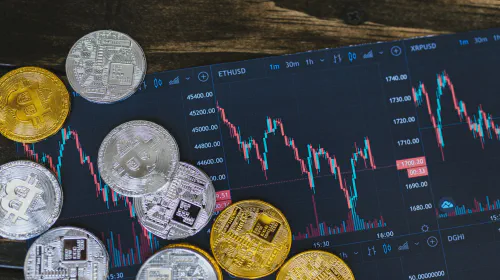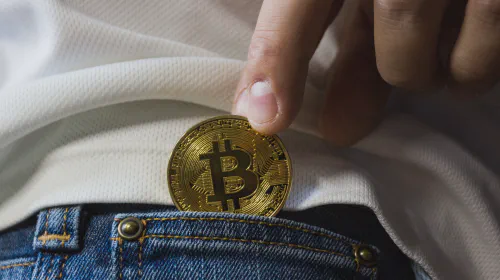What Is Ethereum Classic, and Does It Have a Future?
Salomon Kisters
Sep 30, 2022This post may contain affiliate links. If you use these links to buy something we may earn a commission. Thanks!
Ethereum Classic is an open-source, blockchain-based, decentralized computing platform and distributed cryptocurrency that supports smart contract functionality. Due to their shared origin, Ethereum Classic and Ethereum have many similarities.
The cryptocurrency world is ever-evolving. With so many cryptocurrencies, blockchains, DeFi technologies, wallets, and NFTs in the market, it is easy to get lost in this world and mistake something for what it isn’t. Even the token names get jumbled up a lot, with differences in BTC Wrapped and BTC token leading people to lose money. In times like this, it is important to have your facts as straight as possible.
Ethereum is quite an old player in the market, almost as old as BTC itself. Although its blockchain technology trumps BTC’s blockchain by far, it is still lower in price because of BTC’s sheer ideological power. We are all familiar with the ETH token, but what about Ethereum’s shadowy twin, the Ethereum Classic?
Most people confuse Ethereum and Ethereum Classic to be the same thing. I’m here to assure you that they are absolutely not the same so that you don’t end up backing the wrong horse.
Ethereum Classic was the result of a divergence in ideology. A hack quite literally chopped the blockchain into two pieces, and the community was split along with it. Some decided that Ethereum Classic was the purest form, while some were adamant that Ethereum was the right choice for future development. Let’s go into the details and take a look at what really happened.
How was Ethereum Classic (ETC) Born?
Just like Ethereum, Ethereum Classic is an open-source and decentralized blockchain. It uses a cryptocurrency (ETC) to lubricate its system and hosts smart contracts that can be executed for a host of functionalities.
In 2016, a smart contract known as The Dao was hacked on the Ethereum blockchain. It resulted in the theft of funds of $60 worth of Ether, and the community was split on how to deal with it. Ethereum Classic supporters wanted things to go as they were, while Ethereum supporters wanted to reverse the hack and return the funds.
The users behind Ethereum Classic believed that the laws of the blockchain should be defined by the code. The people who invested in The Dao should have known that the project had serious security flaws. By not doing their research, they got what was coming to them and should not be bailed out.
However, the majority of people in the Ethereum network were much more sympathetic and wanted those people to get back their funds. Therefore, the original blockchain was left with a smaller community centered on Ethereum Classic, and the rest of the people went in a new direction and kept the original Ethereum name.
After the ideological departure of Ethereum Classic from Ethereum, Ethereum has done a lot to improve its overall system. The sharding process ensures that the blockchain shifts to Proof-of-Stake, becoming more environmentally friendly and cheap.
What has Ethereum Classic been doing, meanwhile?
The Ethereum Classic Blockchain
Just like Ethereum, the income-generating model of Ethereum Classic is its ability to formulate and execute smart contracts. Smart contracts are intrinsically intertwined with the decentralized ideology of the blockchain. This means that there is no governance over them, and they can be formulated and executed between any two parties without requiring the intermediation of a legal expert.
Smart contracts are written in code, of course, and thus, they come in the form of if-then statements. If the requirements of the contract are filled, then and only then will the contract be properly executed and the benefits be given to the person who signed the contract.
It is easier to look at them in real-life terms. For example, if you do not pay your apartment lease, your landlord can kick you out by law. Similarly, if you do not deliver the goods, you cannot expect to be paid. On the blockchain, the code is the authority and the ledger system enforces it by locking the funds and resources of people engaging in smart contracts so that they cannot “game the system.”
Smart contracts are the most lucrative side of blockchain technologies these days. Ethereum realized that fact early on; the developers did everything in their power to make sure that the newer blockchain became the new home of Decentralized Finance, Cryptocurrencies, and NFTs.
Ethereum Classic vs. Ethereum
If I am being truly honest, there can never be a comparison between Ethereum Classic and Ethereum since Ethereum is by far and wide considered to be the more legitimate and trustworthy of the two. In 2021, the future trading of Ether was approved by the Chicago Mercantile Exchange, which is proof of how far ahead Ether is from ETC.
To understand the difference between Ethereum Classic and Ethereum, we only need to look at the funds that have been committed to each of them. The market cap of Ethereum is $178,837,072,385.45, while the market cap of Ethereum Classic is $4,625,256,527. That’s one zero too many to ignore the difference. To make matters worse, ETC has about 13 million more coins in circulation than Ethereum today. I don’t even have to quote the prices here. ETC is currently trading between $30-40, while Ethereum is around $1,450!
Ethereum earned its place at the top by constantly innovating its blockchain technology, whereas Ethereum Classic has fallen much behind in that respect. Ethereum Classic is also a lot less secure, which has impacted its growth and investors’ interests. Let’s take a deeper look at why that happened.
The True Impact of The Dao Hack
Back in the good old days, when Ethereum was a single, united blockchain with Ether (ETH) as its native currency, Ethereum became popular as a platform that allowed initial coin offerings (ICO). The Bitcoin blockchain can only host Bitcoin itself, while the Ethereum blockchain can lend its base to other cryptocurrencies.
The Dao was one of the most successful cryptocurrencies on the Ethereum blockchain. It was the decentralized version of venture funding, where people who bought the currency provided the funding pool, and then the community would vote together to decide which investment opportunities the money should be invested in. This would lead to raising the capital that The Dao needed to grow, in turn increasing the value of their native currency. Everyone profits and everyone is happy! The DAO had 11 million ETH collected by more than 18,000 investors before hackers exploited a bug in The DAO’s system.
Apart from believing the code is law, the flag bearers of Ethereum Classic did not want the funds to be refunded to the original owners because they believed it would set in motion a very dangerous precedent of providing bailouts to every other project that’s messed up. One of the most important assets of the blockchain is integrity, and they believe that this principle should be properly adhered to.
Is Ethereum Classic Worth Your Time?
Let’s get back to what you are really here for: is Ethereum Classic worth your time? The shorter answer would be that it is not. The problem that Ethereum Classic faced when 97% of the people departed to the new blockchain was a lack of a community of developers and believers in its ideology. Ethereum Classic’s technology has fallen far behind that of Ethereum’s as a result.
Ethereum Classic is severely limited when it comes to being scalable. It can only handle 15 transactions per second, while the current Ethereum system can handle 30 transactions per second and will be able to do more than 100,000 transactions per second in the future. The transaction speed of Ethereum Classic is too slow to survive in the current environment, and since there is not much development going on at the back end, there is little hope that this will change in the future. There is also the dark stamp of The Dao on Ethereum Classic’s back; nobody really trusts the old blockchain since it has already experienced such a huge setback.
This problem will only be exacerbated in the future when some sort of regulatory mechanism is designed to regulate cryptocurrencies and blockchain technologies. No such system currently exists, and the Security and Exchange Commission (SEC) does not even recognize cryptocurrencies as securities. This will change soon due to work being done to bring cryptocurrencies into the fold of traditional, mainstream financial markets.
Stay informed with the latest insights in Crypto, Blockchain, and Cyber-Security! Subscribe to our newsletter now to receive exclusive updates, expert analyses, and current developments directly to your inbox. Don't miss the opportunity to expand your knowledge and stay up-to-date.
Love what you're reading? Subscribe for top stories in Crypto, Blockchain, and Cyber-Security. Stay informed with exclusive updates.
Please note that the Content may have been generated with the Help of AI. The editorial content of OriginStamp AG does not constitute a recommendation for investment or purchase advice. In principle, an investment can also lead to a total loss. Therefore, please seek advice before making an investment decision.

Can Algorand Be Like Ethereum, and Does It Have a Future?
Today, we will be closely looking at how Agorand compares with Ethereum and whether this new, emerging cryptocurrency has a prosperous future or not.

Ethereum vs. Cardano - What's the Difference?
Those who are well versed in the world of cryptocurrency undoubtedly know about the Cardano vs. Ethereum debate. Let's explore.

Ethereum vs. Dogecoin - What's the Difference?
This article will explain what makes Ethereum and Dogecoin unique and how they compare with each other.
Protect your documents
Your gateway to unforgeable data. Imprint the authenticity of your information with our blockchain timestamp